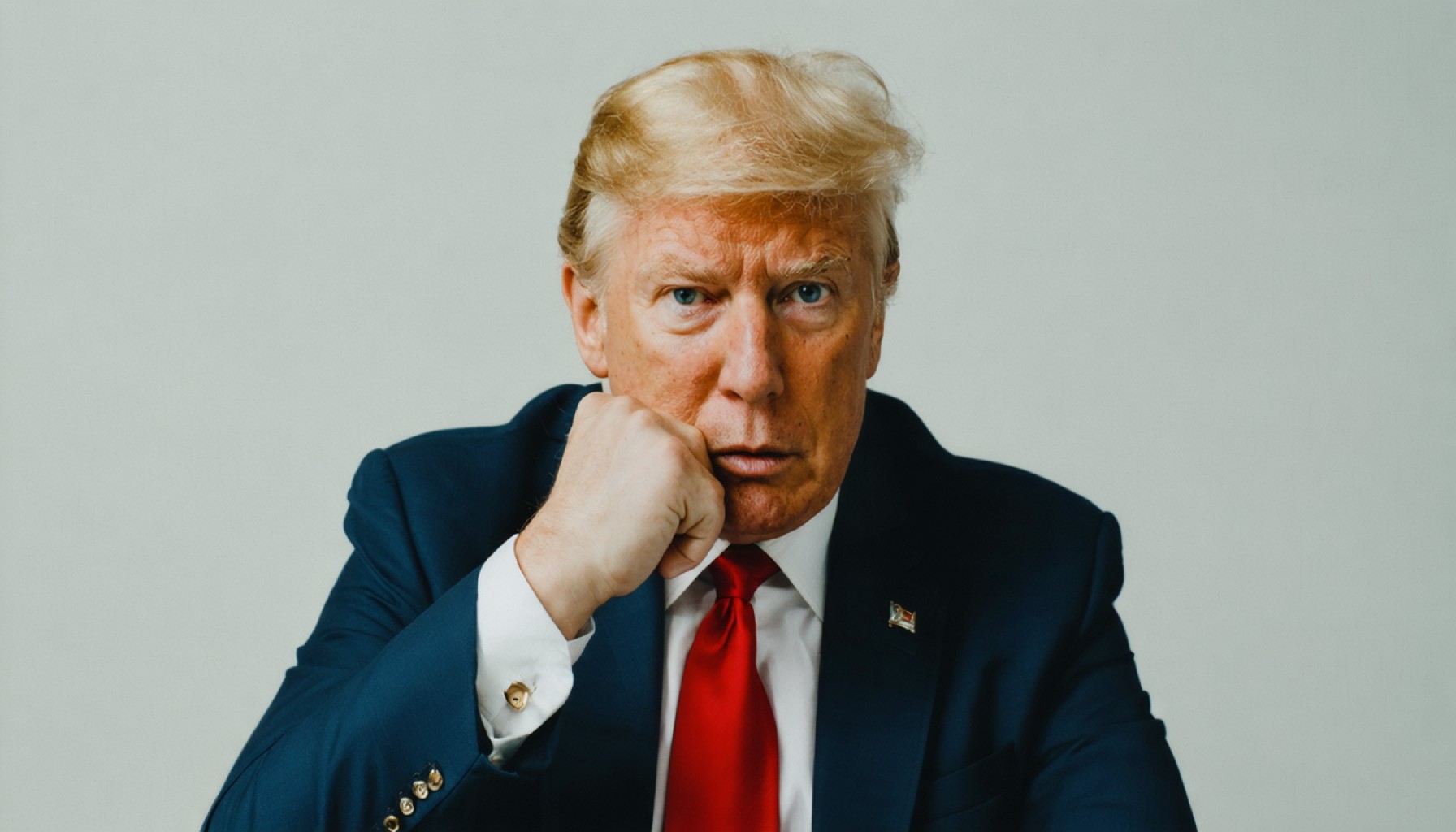
- Wall Street suffered a significant blow, with the S&P 500 losing $2.4 trillion in value, the Dow dropping 1,700 points, and the Nasdaq plunging by 6% due to unexpected tariffs imposed by President Trump.
- The financial turmoil impacted the world’s wealthiest significantly, leading to losses for billionaires like Mark Zuckerberg ($17.9 billion), Jeff Bezos ($15.9 billion), and Elon Musk ($11 billion).
- Apple’s shares fell by 9.25%, highlighting vulnerabilities linked to its manufacturing operations in China.
- The U.S. dollar weakened in international currency markets, reaching six-month lows against the Japanese yen and Swiss franc.
- Market experts express concern over potential economic growth threats and rising inflation due to unforeseen tariff impacts.
- Future financial stability hangs on strategic responses and international diplomatic efforts amid looming higher tariffs and recession risks.
A storm swept through Wall Street, rattling the financial landscape and leaving behind a trail of fiscal chaos. The precipitous decline began to unfold as President Trump’s unexpected tariffs slammed into the global economy with the force of a tidal wave, sparing no one in their path.
In the heart of Manhattan, traders watched in disbelief as the powerhouse S&P 500 hemorrhaged a staggering $2.4 trillion in market value—an upheaval not witnessed since the pandemic battered markets in March 2020. As fear rippled through financial nerve centers, the Dow plummeted by 1,700 points, and the Nasdaq Composite cratered by six percent, marking its most significant single-day decline in over three years.
The seismic shift didn’t limit its impact to mere numbers on a screen. Even the world’s financial titans weren’t immune; collectively, the 500 wealthiest individuals saw $208 billion evaporate. Among the beleaguered elite, Meta’s Mark Zuckerberg endured a personal loss of $17.9 billion as his company’s stocks faltered. Similarly, Amazon’s Jeff Bezos and Tesla’s Elon Musk faced losses of $15.9 billion and $11 billion, respectively. Apple’s shares tumbled by 9.25%, straining nerves with its extensive manufacturing foothold in China.
Beyond the floor of the exchange, the tremors reached international currency markets. The U.S. dollar wilted, hitting a six-month nadir against both the Japanese yen and Swiss franc, underscoring the pervasive uncertainty that shadowed these tariffs.
The financial turmoil sparked a chorus of concern among market experts. The unexpected scale of the tariffs surpassed the most bearish forecasts and threatened to encroach on economic growth while stoking inflationary pressures. In London, experts at J.P. Morgan Asset Management noted the paradoxical struggle—a policy anticipated to bolster the U.S. economy inadvertently sowed seeds of complexity instead.
As Wall Street grapples with immediate turmoil, the future remains uncertain. The looming introduction of even higher tariffs on April 9 holds the market’s hope for stabilization and negotiation-driven relief. The coming days will test resilience as investors brace for potential retaliations that could usher in a recession.
In an era peppered with economic unpredictability and complex geopolitics, this unnerving episode serves as a stark reminder: no fortress of wealth is impervious to the unexpected gusts of policy change. Financial equilibrium hinges on strategic foresight and delicate international diplomacy.
Global Economic Turmoil: How Trump’s Tariffs Reshaped Financial Markets
Overview
The financial tempest caused by President Trump’s unexpected tariffs left Wall Street in disarray, marking one of the most dramatic market downturns since March 2020. With the S&P 500 losing $2.4 trillion in market value and high-profile figures like Mark Zuckerberg enduring personal losses of $17.9 billion, the economic fallout was widespread and indiscriminate.
In-Depth Analysis
Real-World Impact
– Corporate Giants Suffer: The tech industry, already reeling from supply chain disruptions, was particularly hard hit. Apple experienced a 9.25% decline in share value, partly due to its manufacturing reliance on China. Such a dependency emphasizes the risks for companies operating within complex global supply chains.
– Currency Market Volatility: The U.S. dollar’s drop to a six-month low against the yen and the Swiss franc highlighted the interconnected nature of global markets. A weakened dollar can lead to increased costs for U.S. imports, further stoking inflation—an effect contrary to typical tariff goals.
Market Forecasts & Industry Trends
– Tariff Trajectory: Higher tariffs are poised for introduction on April 9, potentially exacerbating market volatility. Historically, prolonged tariff regimes can lead to contracted economic growth and increased consumer prices, straining both U.S. businesses and households.
– Shift Towards Protectionism: The tariffs underscore a trend towards economic nationalism. While these policies aim to protect domestic industries, they tend to isolate economies and disrupt international trade networks.
How-To Steps & Life Hacks
– Building a Defensive Portfolio: Investors can navigate unstable markets by diversifying their portfolios. Allocating assets across various sectors and geographies can mitigate risk. This strategy may include investing in safer assets like gold or government bonds during times of turmoil.
– Hedging Currency Risks: For those involved in international business, currency hedging strategies, such as using forward contracts or engaging in currency swaps, can reduce exposure to currency fluctuations caused by geopolitical events.
Pressing Questions Answered
1. Why do tariffs impact stock markets so severely?
– Tariffs increase production costs, potentially reducing corporate earnings, which directly affects stock prices. Furthermore, retaliation from other countries can shrink global trade volumes, further impacting economic growth.
2. How do tariffs contribute to inflation?
– Higher import costs translate to higher prices for consumers. As companies pass on these costs, inflation rises, decreasing the purchasing power of households.
3. What are the potential long-term effects of continued tariffs?
– Prolonged tariffs can lead to systemic shifts in trade patterns, reduced international cooperation, and long-term economic realignment. Industries heavily reliant on global supply chains could be forced to localize, altering market dynamics.
Recommendations and Quick Tips
– Stay Informed: Use financial news and economic forecasts to anticipate policy changes and adapt investment strategies accordingly.
– Focus on Cash Flow: During uncertain times, prioritize companies with strong cash flow and solid financial health, which are more likely to weather economic storms.
– Prepare for the Long Game: Understand that market corrections offer opportunities for investment. Historically, savvy investors capitalize on lower stock prices to acquire undervalued assets.
For further insights on market trends, financial news, and investment strategies, visit Wall Street Journal and Financial Times.
As the global economy continues to navigate these choppy waters, strategic foresight and adaptability remain crucial for investors and policymakers alike.



